Disequilibrium Syndrome Nursing Interventions
Disequilibrium syndrome nursing interventions. Diagnosis Dialysis disequilibrium syndrome usually occurs during the patients first few dialysis sessions3 The symptoms of the syndrome include3 irritability restlessness headache nausea emesis hypertension blurred vision seizures muscular twitching fasciculations asterixis confusion delirium may last several days Deaths from cerebral edema and herniation have been reported in the past. Early recognition and intervention are essential to prevent the potential deadly effects of this disorder and improve outcomes for. The dialysis disequilibrium syndrome DDS is a clinical constellation of neurologic symptoms and signs occurring during or shortly following dialysis especially when dialysis is first initiated.
Dialysis is primarily used to provide an artificial replacement for lost kidney function renal replacement therapy due to renal failure Dialysis works on the principles of diffusion of solute through a semipermeable membrane that separates two solutions. Weight gain in between dialysis treatment should not exceed more than 05kgday. Early signs include nausea headache vomiting and restlessness.
Free Online Library. Disequilibrium syndrome is caused by too rapid a decrease of BUN and circulating fluid volume. To access precipitating and causative factors.
Measure all sources of IO. The dialysis disequilibrium syndrome DDS is a clinical constellation of neurologic symptoms and signs occurring during or shortly following dialysis especially when dialysis is first initiated. How should patients with dialysis disequilibrium syndrome be managed.
Patient describes symptoms that indicate the need to consult with health care provider. Disequilibrium syndrome of dialysis has essentially the same symptoms as cerebral edema. Direction of diffusion depends on concentration of solute in each solution.
Actually I think hypotension is more of the. Signs include nausea vomiting change in level of consciousness seizures and agitation. Slow gentle initial hemodialysis session aim for an initial urea reduction ratio goal of 30 which is equivalent to a.
It is due to a shift of water to the intracellular spaces as a result of the loss of urea. Advanced age is a risk factor for dialysis disequilibrium and hypotension.
These emergencies include dialysis disequilibrium syndrome venous air embolism hemolysis venous needle dislodgement vascular access hemorrhage major allergic reactions to the dialyzer or treatment medications and disruption or.
Measure all sources of IO. Here are three 3 nursing. Abstract Critical care nurses see patients who may potentially develop dialysis disequilibrium syndrome in a variety of settings including pediatric neurologic and multispecialty intensive care units. How should patients with dialysis disequilibrium syndrome be managed. Early recognition and intervention are essential to prevent the potential deadly effects of this disorder and improve outcomes for. The dialysis disequilibrium syndrome DDS is a clinical constellation of neurologic symptoms and signs occurring during or shortly following dialysis especially when dialysis is first initiated. Aids in evaluating fluid status when compared with weight. More serious symptoms can result in seizures and coma. Nursing care planning and goals for patients who are undergoing hemodialysis include monitoring of the AV shunt patency during the process preventing risk for injury monitoring fluid status and providing information.
Advanced age is a risk factor for dialysis disequilibrium and hypotension. Disequilibrium syndrome of dialysis has essentially the same symptoms as cerebral edema. Signs include nausea vomiting change in level of consciousness seizures and agitation. Here are three 3 nursing. Early signs include nausea headache vomiting and restlessness. Dizzy faint lightheaded ringing in the ears racing pulse feeling warm sweating nausea vomiting yawning itching and severe muscle cramps anywhere on the body. Systemic and neurological symptoms are associated with disequilibrium syndrome.

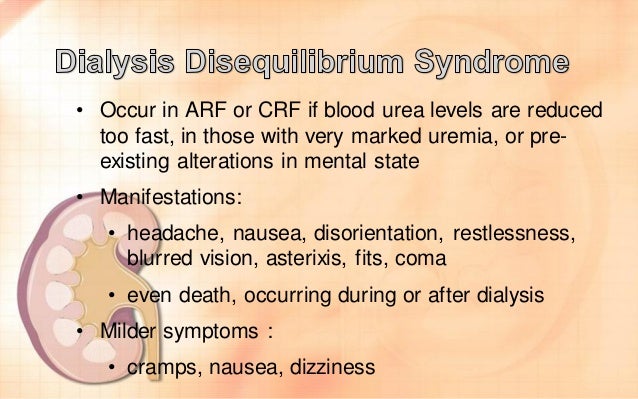



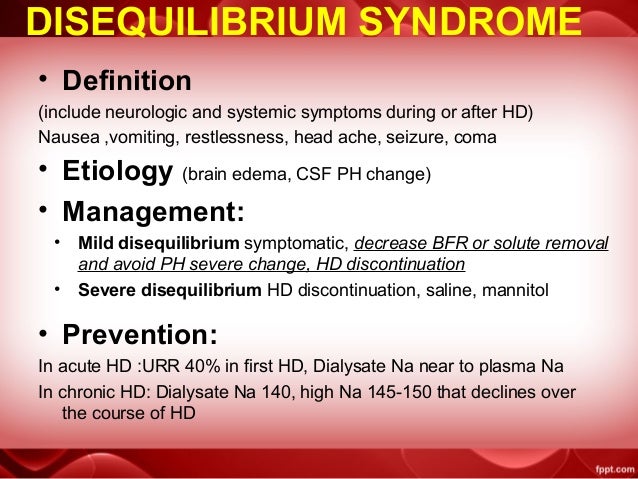

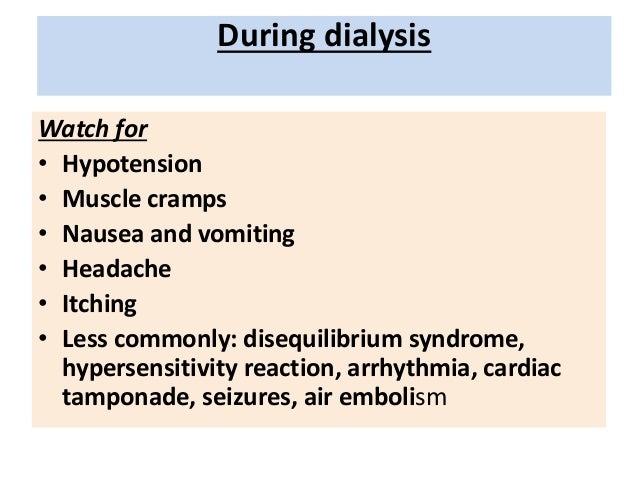




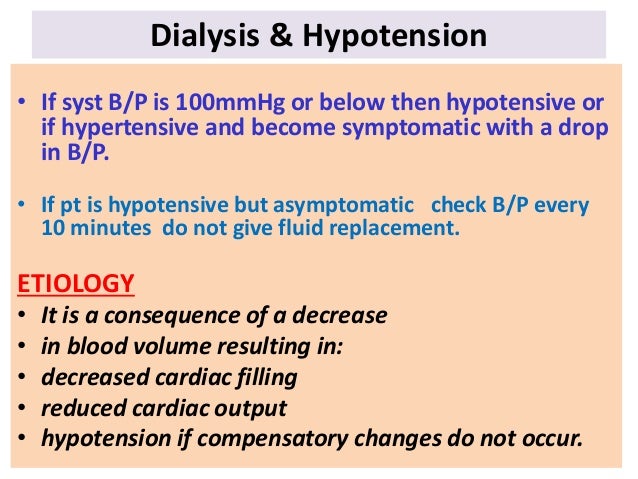
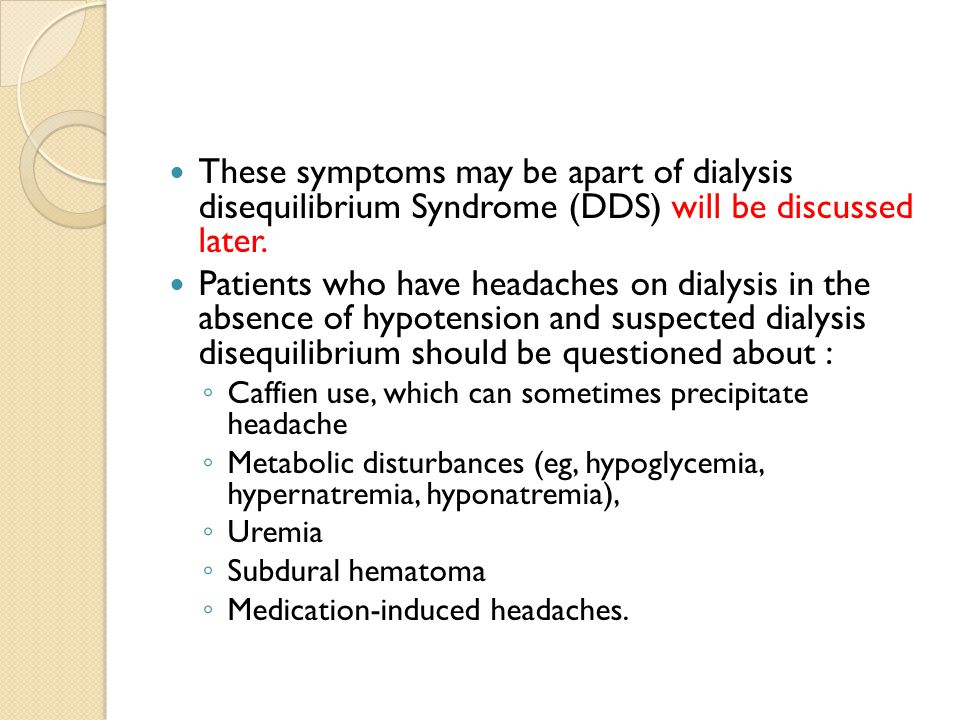




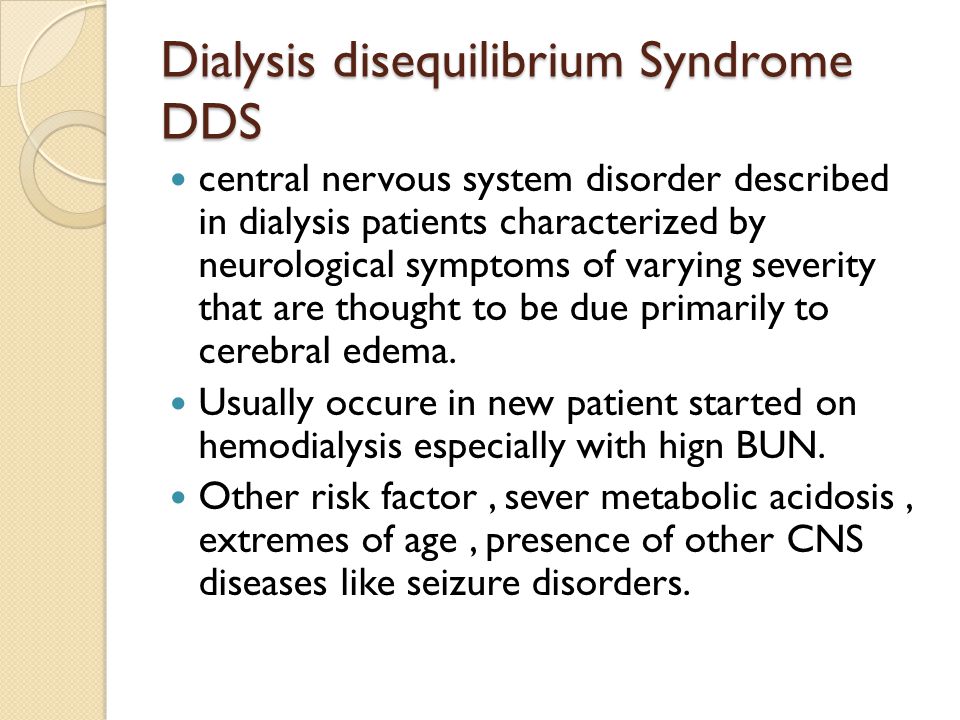






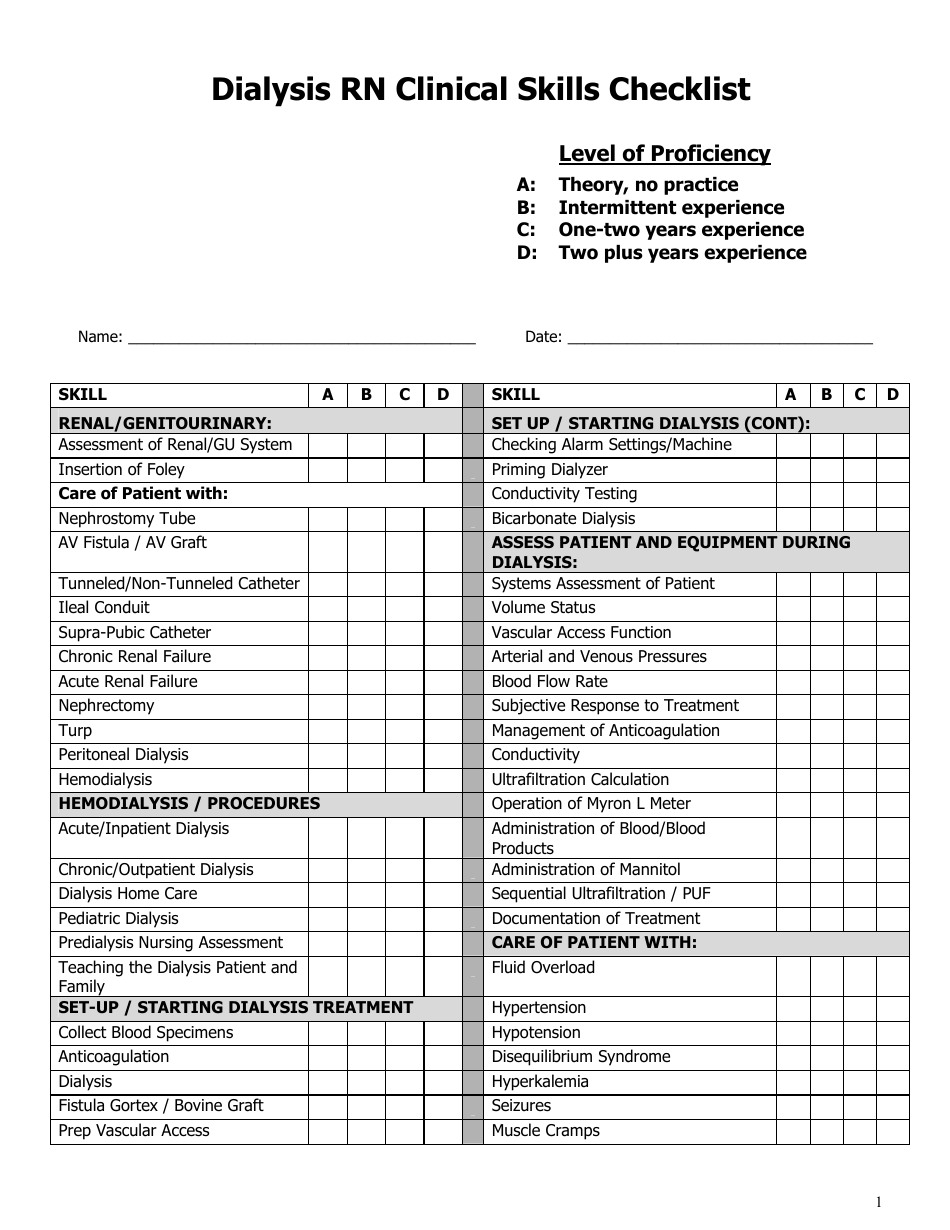




















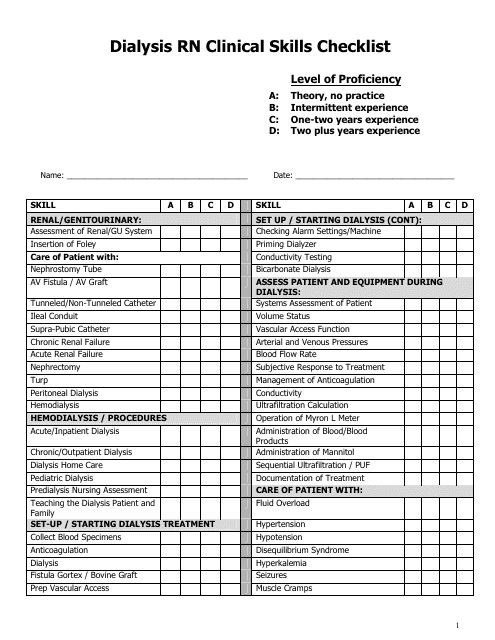
Post a Comment for "Disequilibrium Syndrome Nursing Interventions"